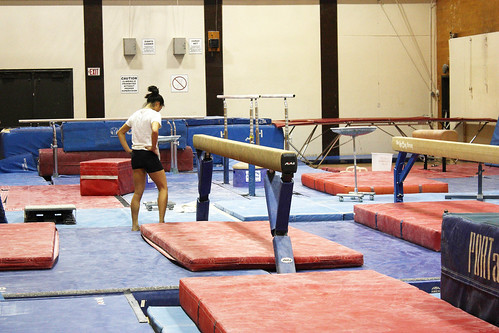Gymnasts are hospitalized after contracting infections from equipment.

Jesse Kitzen-Abelson, a Temple gymnast, thought he just had a bruise on his wrist. But a couple hours after he first noticed the injury, when his wrist became red and began to swell, he knew something was really wrong.
Team physician Dr. Ray Moyer gave Kitzen-Abelson intravenous antibiotics. But after a few hours Kitzen-Abelson, who showed little sign of improvement, was sent to the emergency room, where doctors diagnosed him with Staphylococcus. Kitzen-Abelson spent four days in the hospital.
Kitzen-Abelson is the third male on the gymnastics team to contract a staph infection in the last two-and-a-half years. Four gymnasts from Temple’s adolescent boys’ gymnastics team have also been infected.
Gymnastics coach Aaron Murphy said the prevalence of the bacteria is due to inadequate cleaning of the gym.
“The gymnastic team members are very concerned,” Murphy said. “As a coach, I would hate to see this continue.”
Staph bacteria are common in gyms where athletes use mats for sports like with wrestling and gymnastics. Gymnasts are even more susceptible because the stunts they perform often cause blisters and cuts. Male gymnasts are particularly at risk; four of six men’s events are likely to cause cuts and scrapes, while only one women’s event presents the same danger.
When staph bacteria get into a cut or a scrape, the skin can become severely infected. Kitzen-Abelson had a small blemish on his wrist that may have opened up while he was practicing. A week later, he was hospitalized because his whole wrist was infected.
One of the members of the adolescent boys’ team, an 11-year-old, developed a staph infection on his neck and had to be hospitalized, and Murphy has been infected twice.
Scott Bloomfield, another Temple gymnast, contracted such a severe staph infection in his leg last year that it required knee surgery.
“It can be deadly,” Murphy said. “There have been cases where athletes have passed away in three days.”
Although staph infections usually just affect the skin, the bacteria can also get into the blood stream and cause bone disease, inflammation in the heart’s lining, pneumonia, septic shock, toxic shock syndrome and scalded skin syndrome.
Murphy, who coaches the women’s gymnastic team as well, said the members of the team are concerned. Many of the freshmen, he said, are looking to the upperclassmen for support and advice on the issue.
“You can hear the concern in their voices,” Murphy said.
The upperclassmen remind their teammates to take thorough showers immediately after practice. Murphy also said team members have to make sure they clean any cuts or blisters right away to prevent infections. Temple Athletics also advised the athletes to use hand sanitizer to kill the bacteria.
Despite prevention, if a gym is not cleaned properly, staph infection continues to grow. Murphy said Temple says it administers chemical bombs in the gym every month, with light cleanings every two weeks in between.
“It goes back to the fact that they say they clean it every month, but every year another person gets sick,” Kitzen-Abelson said. “I don’t understand why there aren’t any results.”
Gymnasts and coaches had not seen evidence of regular cleaning until about two weeks ago, Murphy said, when they noticed a canister from one of the chemical bombs. He and the other coaches agreed that along with these bombings, the gym needs to be completely emptied and thoroughly cleaned.
“It’s really hard to pinpoint where it is and kill it,” Murphy said. “Ultimately, the gym needs to be cleaned from head to toe.”
It has been 30 years since most of the equipment was installed in the McGonigle Hall gym, and in all that time, it has never been removed for a cleaning. Murphy does a lot of the mopping, but he said the gym is still filthy.
“I hate to say it about my own gym, but it’s true,” he said.
Murphy and the other coaches have requested Temple completely clean the gym, but officials said Temple can’t afford it, with an estimated cost of cleaning totaling $10,000.
“Ten thousand can seem like a lot,” Murphy said,” but when it comes to people’s lives, it’s not.”
Rebecca Hale can be reached at rebecca.hale@temple.edu.



Molluscum is a tricky infection. Thanks for posting this.